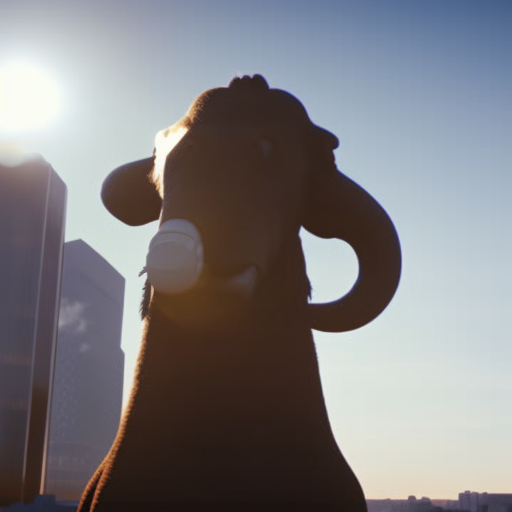Megafauna: A Brief Overview
Megafauna refers to large animals, typically weighing over 44 kilograms (97 pounds), that lived on Earth during the Pleistocene epoch, which lasted from about 2.6 million to 11,700 years ago. These creatures roamed various habitats across the globe, including grasslands, forests, and tundra. The term “megafauna” is derived from the Greek words “mega” meaning large and “fauna” meaning animals. The study of megafauna is important as it provides insights into past ecosystems and the effects of climate change and human activities on biodiversity.
Types of Megafauna
Megafauna encompassed a diverse range of species, including mammals, birds, reptiles, and amphibians. Some well-known examples of megafauna include the woolly mammoth, giant ground sloth, saber-toothed cat, and Irish elk. Other notable species include the giant short-faced bear, dire wolf, and the South American terror bird. These animals were often larger than their modern-day counterparts and had unique adaptations to their environments.
Causes of Megafauna Extinction
The extinction of megafauna is a topic of great interest and debate among scientists. Several factors are believed to have contributed to their demise, including climate change, human hunting, and habitat loss. The end of the Pleistocene epoch was marked by significant climate fluctuations, including the last glacial maximum, which caused drastic changes in vegetation and disrupted ecosystems. This, in turn, affected the availability of food and resources for megafauna, leading to population declines.
Human activity is also thought to have played a significant role in the extinction of megafauna. As early humans migrated across the globe, they encountered these large animals and likely hunted them for food and resources. Overhunting, coupled with the already stressed populations due to climate change, may have pushed many megafauna species to the brink of extinction. The arrival of humans also brought habitat destruction through the clearing of land for agriculture and the introduction of invasive species.
Implications and Lessons from Megafauna Extinction
The extinction of megafauna has had profound ecological implications. The loss of these large animals disrupted food chains and altered ecosystems. For example, the disappearance of large herbivores led to changes in vegetation composition and structure, affecting other species that relied on these plants for food and shelter. The loss of top predators also had cascading effects on prey populations and ecosystem dynamics.
Studying megafauna extinction provides valuable lessons for understanding the current biodiversity crisis. It highlights the vulnerability of large animals to environmental changes and human activities. The rapid decline of megafauna during the Pleistocene serves as a cautionary tale for the conservation of endangered species today. It emphasizes the importance of protecting habitats, managing human-wildlife interactions, and mitigating the impacts of climate change to prevent further extinctions.
Current Efforts and Future Research
Scientists continue to investigate the causes and consequences of megafauna extinction. Advances in paleontological and genetic techniques have allowed for a better understanding of the timing and patterns of extinction events. Researchers are also exploring the potential for de-extinction, using genetic engineering to resurrect extinct species such as the woolly mammoth.
Conservation efforts are focused on protecting and restoring habitats, implementing sustainable hunting practices, and raising awareness about the importance of biodiversity. By studying the past, scientists aim to inform and guide conservation strategies for the future, ensuring the survival of Earth’s remaining megafauna and preventing further losses of biodiversity.












